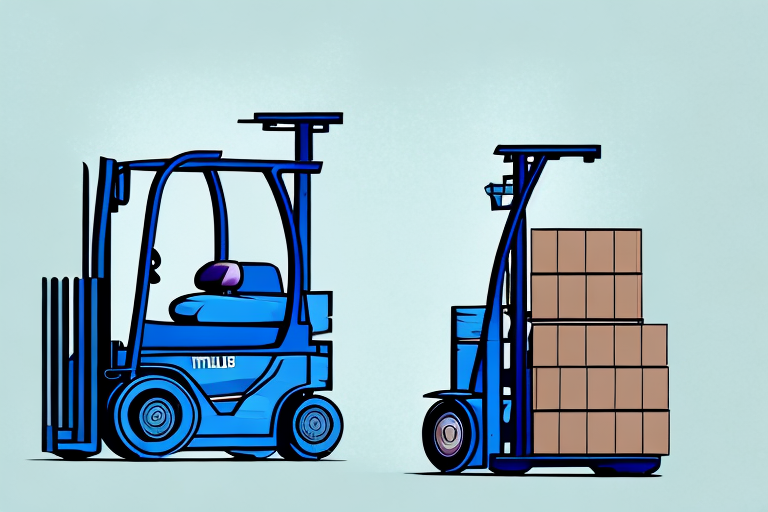Maximizing Efficiency in Your Supply Chain with Forklifts
Forklifts are pivotal in supply chain management, enabling the seamless movement of goods within warehouses. Operational efficiency is essential for maintaining competitiveness in today's business environment, and forklifts are instrumental in achieving this. This article explores how forklifts can enhance your supply chain management, covering selection, training, maintenance, and optimization of forklift use in your warehouse.
The Importance of Forklifts in Supply Chain Management
Forklifts are indispensable for moving and handling materials in warehouse settings. They facilitate the quick and efficient movement of pallets and other heavy items, significantly reducing the time and labor required for various tasks. Additionally, forklifts aid in reconfiguring warehouse layouts and managing inventory by enabling rapid movement and precise positioning of items.
Beyond warehouse operations, forklifts are crucial in broader supply chain management. They are commonly used to load and unload goods from trucks and shipping containers, ensuring products are moved efficiently and safely. Forklifts also transport goods between different areas of manufacturing or distribution facilities, streamlining the supply chain process and reducing operational costs.
Choosing the Right Type of Forklift for Your Business
Before investing in forklifts, it's essential to assess your specific needs and select the type that best aligns with those requirements. Consider factors such as load capacity, maneuverability, and the types of goods you will be handling. Various forklift types, including counterbalance, reach, and pallet jacks, offer unique features that may better suit your business's specific needs.
Another critical consideration is the environment where the forklift will operate. For instance, businesses with narrow warehouse aisles may benefit from narrow aisle forklifts, while those operating outdoors on uneven terrain might require rough terrain forklifts to handle challenging conditions.
Maintenance and repair costs also play a significant role in selecting the appropriate forklift. Some models may demand more frequent maintenance or incur higher repair costs than others. It's essential to factor these costs into your decision-making process to ensure a cost-effective investment.
Understanding the Different Forklift Attachments and Their Uses
Forklifts come with a variety of attachments that enhance their functionality. For example, clamps can lift and transport barrels or drums, while booms handle large or cumbersome items. Selecting the right attachment for your specific needs is crucial for maximizing forklift efficiency.
Other common attachments include side shifters, which allow operators to move forks horizontally for precise load positioning; bale clamps for handling bales of materials like hay or cotton; and carton clamps for managing boxes or cartons. Proper training on these attachments is essential to ensure safe and efficient operations.
How to Train Your Employees on Safe and Efficient Forklift Operation
Comprehensive training is vital for the safe and efficient operation of forklifts. All operators should undergo extensive training covering forklift use, safety procedures, proper loading and unloading techniques, and emergency response protocols. Regular refresher courses should be provided to maintain high safety and operational standards.
Establishing clear guidelines and protocols for forklift operation within the workplace is equally important. This includes designating specific forklift zones, setting speed limits, and ensuring all operators are properly licensed and authorized to use the equipment.
Regular inspections and maintenance of forklifts are necessary to ensure they remain in optimal working condition. This involves checking for signs of wear and tear, replacing damaged parts, and verifying that safety features are functioning correctly. Prioritizing maintenance helps prevent accidents and maintains forklift efficiency.
Best Practices for Maintaining Your Forklifts to Ensure Longevity and Performance
Routine maintenance is essential for extending the lifespan and ensuring the performance of your forklifts. Operators should be trained in proper maintenance procedures, including routine inspections, regular cleaning, and preventative maintenance measures. Identifying and addressing issues early prevents major problems and keeps forklifts running efficiently.
Maintaining accurate records of all maintenance activities is crucial. Tracking routine inspections, part replacements, and repairs helps identify patterns or recurring issues, aiding in future maintenance planning and ensuring timely interventions.
Moreover, training operators not only in forklift operation but also in basic maintenance tasks can prevent accidents and equipment damage, further extending the lifespan of your forklifts.
Tips for Optimizing Your Warehouse Layout for Forklift Efficiency
The layout of your warehouse significantly impacts forklift efficiency. Factors such as aisle widths, turning radii, and the placement of storage racks should be carefully considered when designing your warehouse layout. An optimized layout leads to more efficient forklift operations and reduced cycle times.
Strategic placement of loading docks can also enhance efficiency. Centralizing loading docks minimizes the distance forklifts need to travel for loading and unloading, saving time and boosting productivity. Additionally, ensuring that loading docks are appropriately sized and positioned for your forklifts prevents unnecessary strain on operators and equipment.
How Technology is Revolutionizing the Use of Forklifts in Supply Chain Management
Advancements in technology, such as automation, augmented reality, and data analytics, are transforming forklift usage in supply chains. These innovations contribute to greater operational efficiency, cost savings, and enhanced safety.
Automation is a significant advancement in forklift technology. Automated forklifts equipped with sensors and cameras can navigate warehouses and distribution centers without human intervention, reducing labor costs and increasing productivity by enabling round-the-clock operations.
Augmented reality (AR) is another transformative technology. With AR, forklift operators can use smart glasses to access vital information, such as inventory locations and optimal routes. This technology enhances accuracy and speed, allowing operators to locate and move products more efficiently.
For more insights on technological advancements in supply chain management, refer to ShipScience's technology innovations.
The Environmental Impact of Forklifts and Ways to Reduce It
Forklifts can significantly impact the environment through emissions and noise pollution. To mitigate these effects, consider investing in electric or hybrid forklifts, maintaining equipment regularly, and developing a comprehensive environmental strategy for your business.
Diesel-powered forklifts are major contributors to emissions, releasing high levels of particulate matter, nitrogen oxides, and sulfur dioxide, which adversely affect air quality and human health. Transitioning to electric or hybrid forklifts can substantially reduce these emissions and improve workplace air quality.
Noise pollution from forklifts can also affect employee productivity and well-being, especially in indoor environments. Electric forklifts are generally quieter than diesel models, offering a quieter workplace. Additionally, implementing noise-reducing measures such as sound barriers or acoustic panels can further minimize noise levels.
Cost Analysis: Calculating the ROI of Investing in Forklifts for Your Supply Chain
Conducting a comprehensive cost analysis is essential when considering forklift investments. This analysis should encompass purchase prices, operating costs, and maintenance expenses. Additionally, the return on investment (ROI) should factor in efficiency gains and cost savings from improved supply chain management.
Electric forklifts may have higher initial costs but offer long-term savings through lower operating costs and reduced maintenance requirements. Conversely, propane or diesel forklifts might be more suitable for heavy-duty or outdoor applications.
The lifespan of a forklift is another critical factor. Investing in higher-quality forklifts, although more expensive upfront, can lead to significant cost savings and efficiency gains over time compared to lower-priced models that may require frequent replacements.
Conclusion
Forklifts are invaluable tools for enhancing efficiency in your supply chain. From selecting the appropriate forklift type to training employees and maintaining equipment, numerous factors contribute to optimizing forklift use. By carefully assessing your needs, following best practices, and leveraging technological advancements, you can significantly improve your supply chain management and operational efficiency.






















